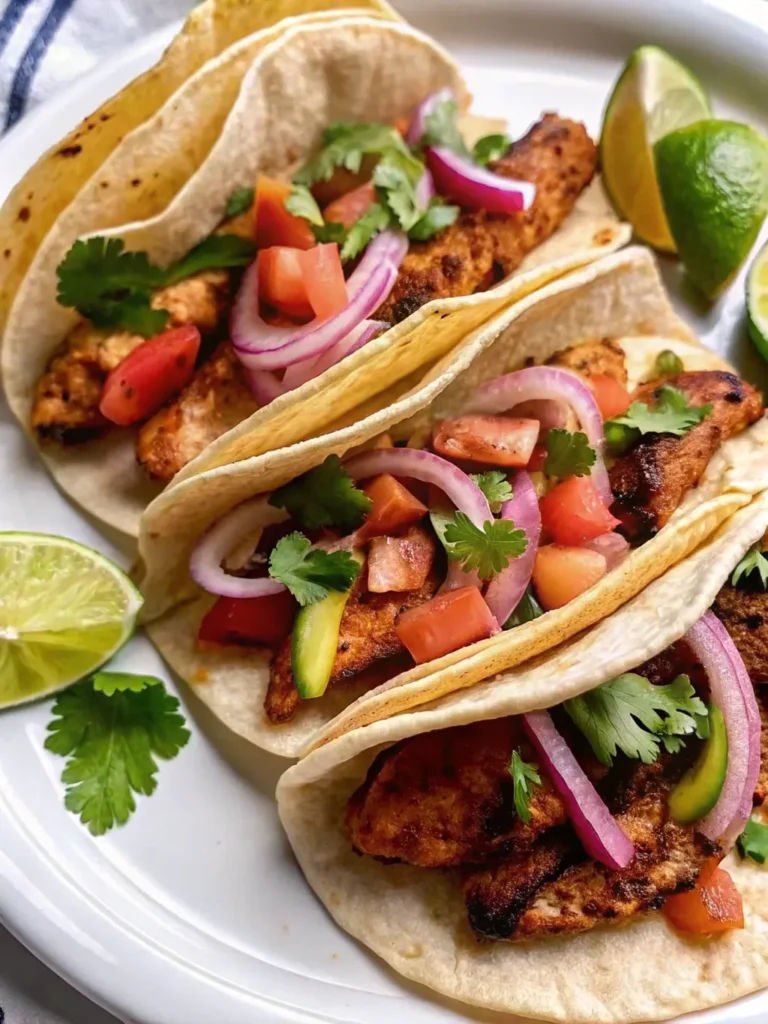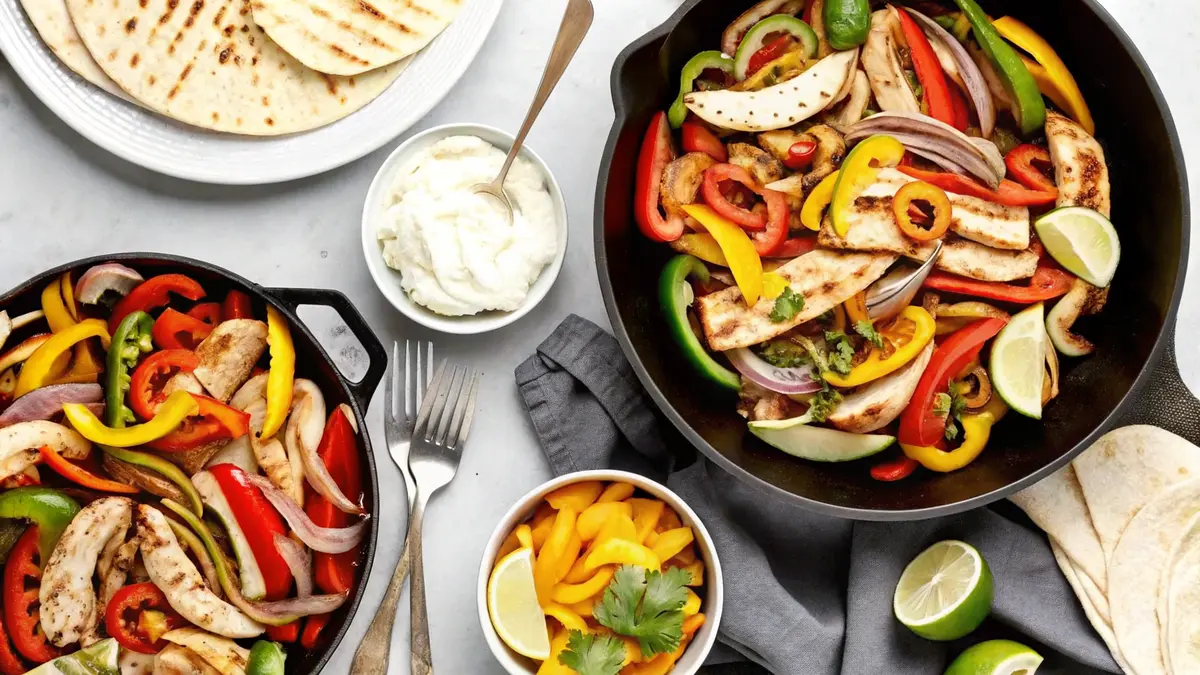Fajitas are a beloved Tex-Mex dish, blending sizzling chicken, vibrant peppers, and aromatic spices into a flavorful experience. But when it comes to health-conscious dining, one question often pops up: how much salt is in Maria’s fajita chicken? Sodium content is a critical factor in deciding how much salt in marias fajita chicken makes it a suitable choice for a balanced diet.
In this article, we’ll dive deep into the sodium levels in Maria’s fajita chicken, unpack its nutritional profile, explore health implications, and offer practical tips for enjoying this dish without compromising your health. From understanding the salt content to cooking low-sodium alternatives, let’s uncover everything you need to know to make an informed choice.
Understanding Sodium Content in Fajita Chicken
What is Sodium, and Why Does It Matter in Your Diet?
Sodium is a mineral that plays an essential role in maintaining fluid balance, nerve function, and muscle contractions. However, consuming too much sodium can lead to health issues like high blood pressure, heart disease, and kidney problems. The recommended daily sodium intake is 2,300 milligrams for most adults, though many experts suggest aiming for 1,500 milligrams to reduce risks further.
In the case of Maria’s fajita chicken, sodium content can vary depending on the preparation method and ingredients used. Fajitas are often seasoned with salt-heavy spice blends and sauces, which can significantly contribute to your daily sodium limit.
Overview of Maria’s Fajita Chicken: Ingredients and Preparation Process
Maria’s fajita chicken typically includes thinly sliced chicken breast, bell peppers, onions, and a mix of Tex-Mex seasonings. These spices, while delicious, often rely heavily on salt to enhance flavor. Some recipes might also use pre-marinated chicken or packaged seasoning blends, both of which can be sneaky sources of excess sodium.
Another factor is the cooking method. Grilling or pan-searing locks in flavor but can also intensify the saltiness of pre-marinated meats. Additionally, serving the dish with tortillas, cheese, or condiments like sour cream may increase the total sodium content.
The Role of Salt in Enhancing Flavors: How Much Salt is Added?
Salt is a key ingredient in creating the bold, smoky taste that makes fajitas irresistible. In Maria’s fajita chicken, an estimated 1,000–1,200 milligrams of sodium could be present per serving, depending on how the dish is prepared. That’s nearly half the daily recommended sodium intake!
Salt doesn’t just add taste—it raises questions like how much salt in marias fajita chicken affects its flavor and nutritional profile. However, for those watching their sodium levels, this amount can be a red flag. Opting for homemade or low-sodium seasoning alternatives can make a significant difference in the healthiness of the dish without sacrificing its Tex-Mex charm.
Nutritional Profile of Marias Fajita Chicken

Calorie and Sodium Content Breakdown per Serving
When analyzing Maria’s fajita chicken, it’s essential to look at the entire nutritional picture. A typical serving, including chicken, sautéed veggies, and tortillas, can range between 300–400 calories. While this is relatively moderate for a main meal, the sodium levels might tell a different story.
Each serving of Maria’s fajita chicken may contain anywhere from 1,000 to 1,200 milligrams of sodium. That’s nearly 50% of the daily recommended limit for adults. The seasoning mix and marinade are the primary culprits, packing in most of the salt. Adding tortillas, cheese, and condiments such as salsa or sour cream can bump up the sodium even more.
In comparison, other Tex-Mex dishes like burritos or enchiladas often have higher calorie counts but might contain similar sodium levels, making fajitas seem like the “healthier” option. However, if sodium reduction is a priority, fajitas still require some tweaking.
Comparison with Other Chicken Fajita Brands and Recipes
Interestingly, Maria’s fajita chicken is not alone in its sodium content. Many wonder how much salt in marias fajita chicken compares to sodium levels in prepackaged fajita kits or fast-food options, which can reach as high as 1,500 milligrams per serving. Homemade versions of chicken fajitas, on the other hand, allow for greater control of ingredients, meaning you can drastically cut down the salt.
For instance, using a low-sodium spice blend or fresh herbs instead of pre-made seasonings can shave off up to 50% of the sodium. Ultimately, whether it’s Maria’s fajitas or another brand, awareness of ingredient labels and portion sizes is critical in managing sodium intake.
Health Implications of High Sodium in Diet
How Excess Sodium Affects Your Health
Eating too much sodium isn’t just a minor dietary concern—it can have far-reaching effects on your health. High-sodium diets are linked to elevated blood pressure, which increases the risk of heart attacks, strokes, and kidney disease. For individuals with existing hypertension or heart conditions, cutting back on foods like Maria’s fajita chicken becomes even more vital.
Moreover, excessive sodium can lead to water retention, causing bloating and discomfort. While this might not seem serious, it’s a sign your body is struggling to balance fluid levels due to high salt intake. Regular consumption of high-sodium meals like pre-seasoned fajitas can exacerbate these issues over time.
Daily Recommended Sodium Intake and How Fajita Chicken Fits In
The American Heart Association recommends a daily sodium intake of no more than 2,300 milligrams, with an ideal target of 1,500 milligrams for most adults. If one serving of Maria’s fajita chicken provides up to 1,200 milligrams, you’ve already consumed more than half the maximum limit.
This leaves little room for other salty foods throughout the day, like snacks, canned soups, or processed meats. Balancing your diet requires careful planning, especially when enjoying sodium-rich dishes like fajitas. For instance, pairing fajitas with low-sodium sides, such as a fresh salad or steamed vegetables, can help offset the sodium content.
Long-Term Risks of High-Sodium Foods
Consistently exceeding sodium limits can lead to long-term health problems. Chronic high blood pressure (hypertension), cardiovascular diseases, and even osteoporosis are associated with high sodium intake. Additionally, studies suggest that reducing sodium consumption can significantly lower your risk of heart-related illnesses.
For those who love Maria’s fajita chicken, the good news is that small adjustments—like reducing salt-heavy toppings or creating homemade versions—can make a big difference without sacrificing flavor.
Low-Sodium Alternatives for Fajita Chicken
Maria’s Fajita Chicken: Can You Customize It for Lower Sodium?
For those wondering how much salt is in Maria’s fajita chicken, it’s clear that sodium content can be on the higher side. But the good news is that this dish can be tailored to fit a low-sodium diet without compromising on flavor.
Start by asking if Maria’s fajitas can be prepared with less salt. Many restaurants and pre-made brands are open to customization upon request. Alternatively, try swapping high-sodium ingredients with healthier choices. For instance, use freshly squeezed lime juice or garlic powder instead of pre-seasoned fajita spice mixes.
Additionally, consider skipping salty toppings like shredded cheese and sour cream. Instead, opt for guacamole or fresh salsa, which add bold flavors without piling on the sodium.
Tips for Cooking Low-Sodium Fajitas at Home
Homemade fajitas offer the ultimate control over sodium levels. Begin with fresh, unprocessed chicken and season it with herbs and spices like cumin, smoked paprika, and coriander. Avoid pre-marinated meats and packaged sauces, as they often contain hidden salt.
Cooking techniques also matter. Grilling or roasting your chicken instead of pan-searing reduces the need for extra seasoning. Pair the chicken with vibrant vegetables like bell peppers, onions, and zucchini for natural sweetness and texture.
If tortillas are a must, choose low-sodium or whole-grain varieties. Alternatively, serve your fajitas in lettuce wraps for a light, refreshing twist.
For more delicious low-sodium recipes, check out our Chicken Scampi with Garlic Parmesan Rice—a flavorful alternative to high-sodium meals.
People Also Ask: FAQs About Salt in Marias Fajita Chicken
How much sodium is in a typical serving of Maria’s Fajita Chicken?
One serving of Maria’s fajita chicken typically contains between 1,000 and 1,200 milligrams of sodium. This amount can vary based on portion sizes, added toppings, and preparation methods.
Is Maria’s Fajita Chicken suitable for a low-sodium diet?
Unfortunately, Maria’s fajita chicken might not be ideal for those on a strict low-sodium diet. However, requesting reduced-sodium options or modifying the dish at home can make it a more suitable choice.
Can you request less salt when ordering Maria’s Fajita Chicken?
Yes, most restaurants are accommodating when it comes to dietary preferences. Requesting less salt or skipping certain toppings like cheese and sauces can significantly reduce the sodium content.
For more delicious recipes and tips, check out our Venison Cube Steak Recipes for a unique, low-sodium meal idea.
Conclusion: Balancing Flavor and Nutrition in Fajitas
Key Takeaways About Sodium in Maria’s Fajita Chicken
Fajitas are a delicious and versatile Tex-Mex dish, but understanding how much salt is in Maria’s fajita chicken is key to making healthier choices. With sodium levels ranging between 1,000 and 1,200 milligrams per serving, it’s clear this dish can quickly take up a significant portion of your daily sodium limit.
Whether you’re enjoying fajitas at a restaurant or preparing them at home, it’s essential to be mindful of portion sizes, ingredients, and added toppings. Pre-made seasoning blends, tortillas, and condiments are often the biggest contributors to the dish’s sodium content.
Suggestions for Enjoying Fajitas Without Compromising Health
Reducing sodium doesn’t mean sacrificing flavor. By customizing Maria’s fajita chicken or cooking your own low-sodium version at home, you can still enjoy the bold, zesty taste of fajitas without the health risks of excessive salt. Fresh herbs, citrus juice, and natural spices can transform your fajitas while keeping them heart-healthy.
For those with dietary restrictions or preferences, fajitas can be adapted in countless ways. Remember, a little preparation goes a long way in creating a flavorful yet nutritious meal that satisfies your Tex-Mex cravings.

